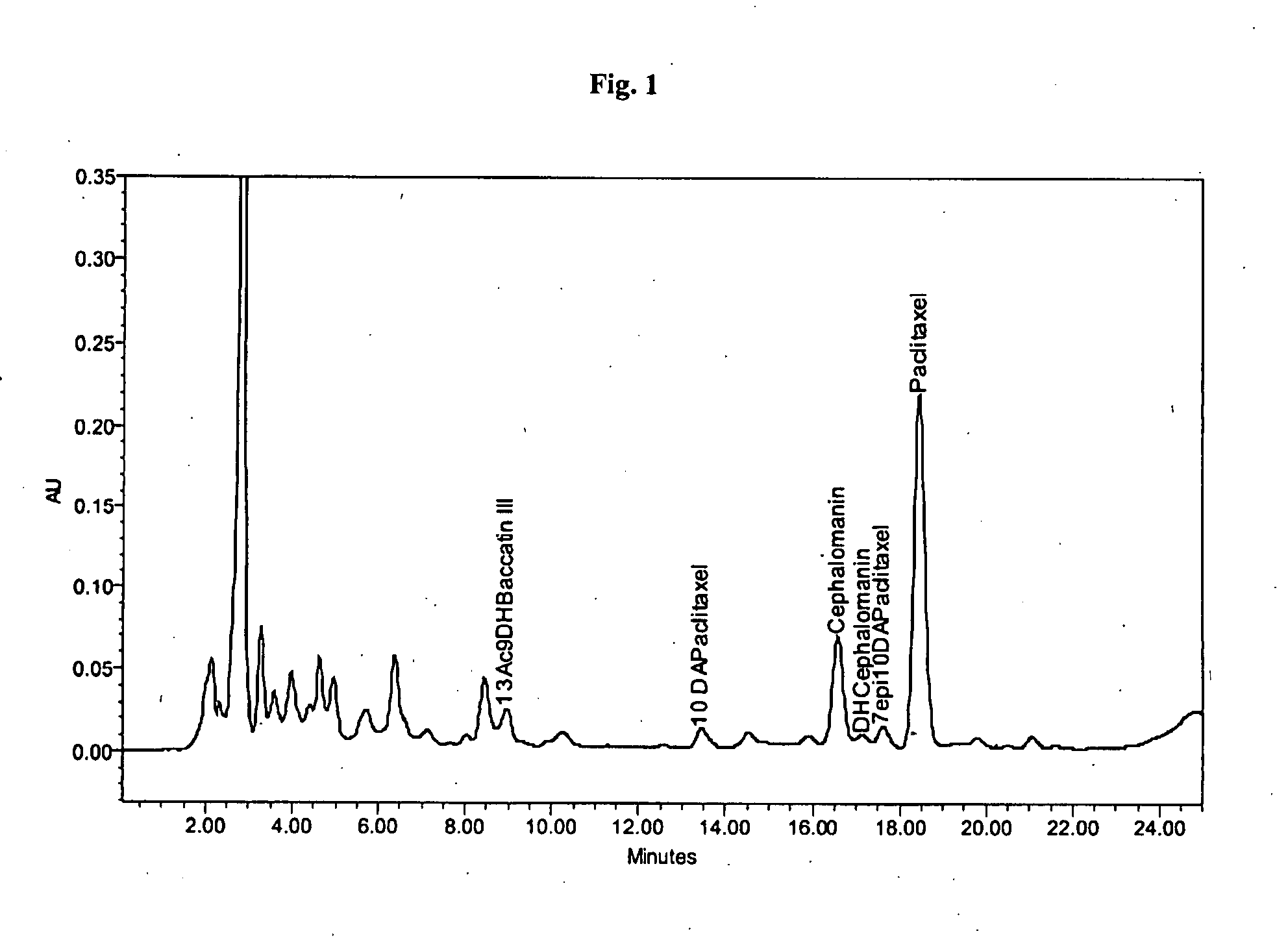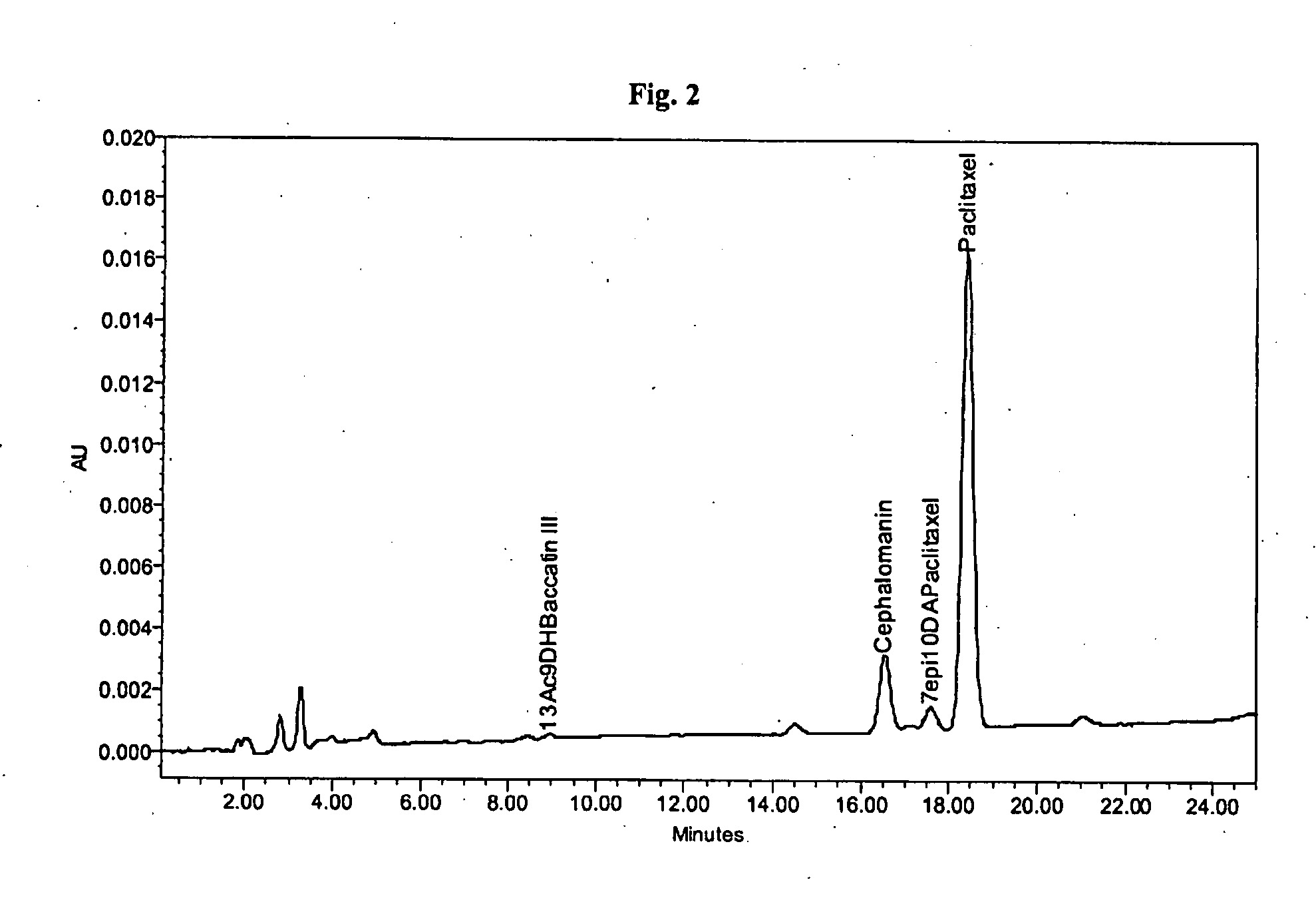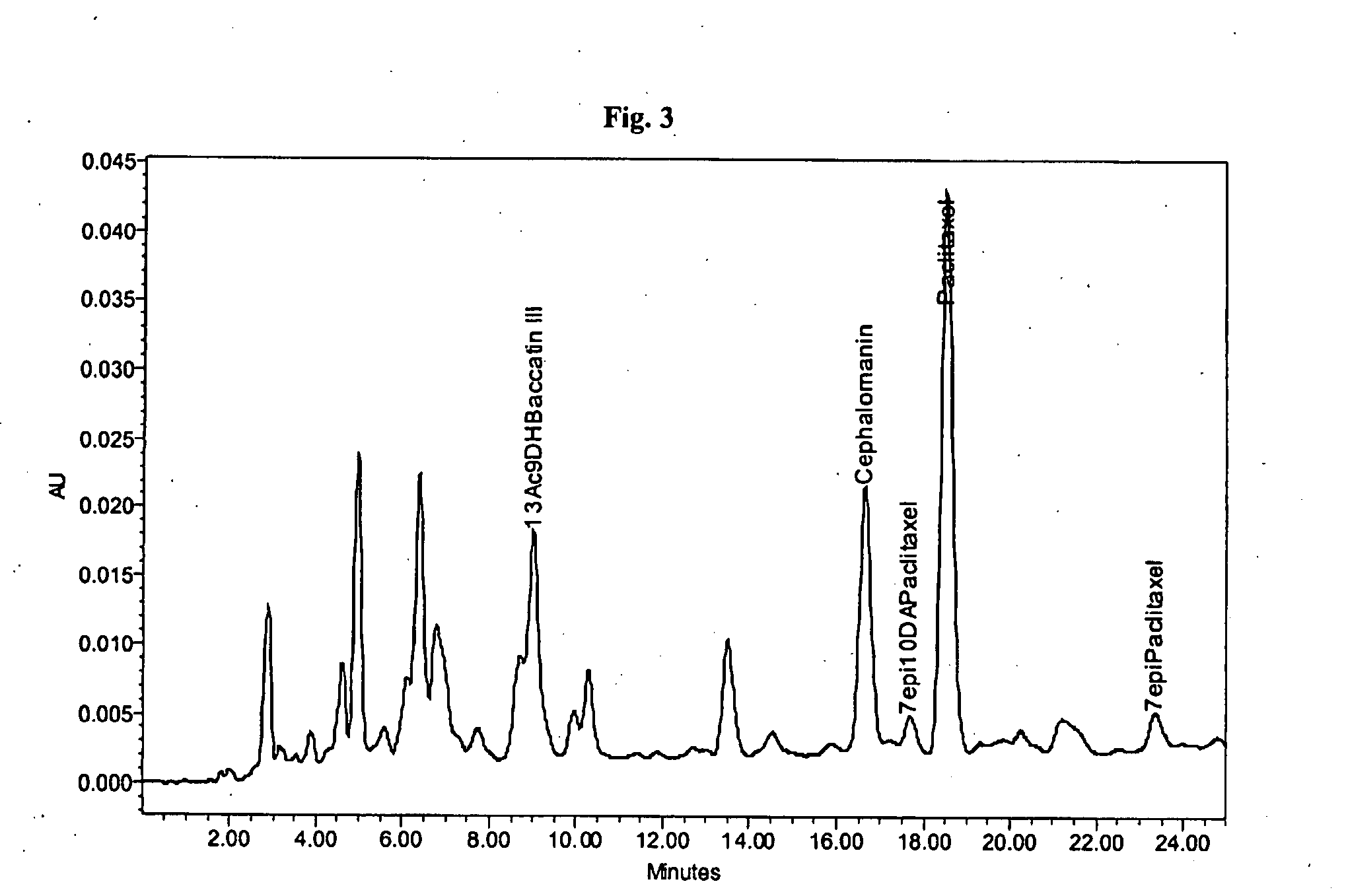Process for the isolation of paclitaxel
a technology of paclitaxel and purification method, which is applied in the field of purification process of paclitaxel, can solve the problems of complex and difficult isolation of paclitaxel from all types of potential vegetative sources, process using expensive stationary phase, etc., and achieves high purity, simple and inexpensive method, large-scale isolation and production
- Summary
- Abstract
- Description
- Claims
- Application Information
AI Technical Summary
Benefits of technology
Problems solved by technology
Method used
Image
Examples
example 1
[0055]About 0.71 g of a crude mixture containing about 8.38% of paclitaxel and about 2.23% of cephalomannin (as shown in FIG. 1) was dissolved in about 10 mL of a mixture containing acetone and toluene in a 10:90 (V / V) ratio. The solution was loaded on a column filled with about 45 g of a polyamide-based adsorbent (Polyamide Roth, particle size about 50-160 μm). The column was then eluted with about 600 mL of a 10:90 (V / V) acetone and toluene solution. Then about 1200 mL of a solution of acetone and toluene was added to the column while linearly increasing the gradient of acetone from a starting ratio of 10:90 (V / V) to final ratio of 100:0 (V / V). The flow of the mobile phase was maintained at about 50 mL / min during the entire elution procedure. Fractions of the eluting solution were taken approximately every 50 mL from the time of injection to the end time of the gradient elution and analyzed by HPLC. Fractions of eluting solution containing paclitaxel were evaporated to dryness aff...
example 2
[0056]About 0.75 g of a crude mixture containing about 1.99% of paclitaxel and about 0.89% of cephalomannin (as shown in FIG. 3) was dissolved in 15 mL of a mixture of acetone and toluene 10:90 (V / V). The solution was loaded on a column filled with about 45 g of polyamide (Polyamide Roth, particle size about 50-160 μm). The column was then eluted with 600 mL of a 10:90 (V / V) acetone to toluene solution while maintaining a temperature of about 40° C. The approximately 1200 mL of an acetone and toluene combination was added while linearly increasing the gradient of acetone from a starting ratio of 10:90 (V / V) to final ratio of 100:0 (V / V). Fractions of eluting solution were taken at each 50 mL. The fractions were analyzed by HPLC. The same experiment with identical starting material was performed under the same conditions except the column was maintained at about 50° C., 60° C. or 70° C. Corresponding fractions containing paclitaxel from all four separations were evaluated for both pa...
example 3
[0057]About 198.0 g of a crude paclitaxel mixture containing about 7.3% of paclitaxel and about 2.3% of cephalomannin (initial ratio paclitaxel / cephalomannin was about 3.17:1 according to HPLC analysis, as shown in FIG. 6) was dissolved in 4 L of acetone and toluene (10:90 V / V). The solution was loaded on a column filled with about 6830 g of polyamide (Polyamide Roth, particle size about 50-16.0 μm). The column was then eluted with 100 L of acetone and toluene (10:90 V / V). It was further eluted with 200 L of mixture of acetone and toluene while linearly increasing the gradient of acetone from a starting ratio of 10:90 (V / V) to final ratio of 100:0 (V / V). Fractions of the eluting solution were taken each 20 L and analyzed by HPLC. Fractions containing pure paclitaxel were evaporated to dryness affording about 22.42 g of product containing about 60.5% of paclitaxel and about 1.3% of cephalomannin (HPLC analysis shown in FIG. 7). The purity of paclitaxel after crystallization from mixt...
PUM
| Property | Measurement | Unit |
|---|---|---|
| boiling points | aaaaa | aaaaa |
| V/V | aaaaa | aaaaa |
| V/V | aaaaa | aaaaa |
Abstract
Description
Claims
Application Information
 Login to View More
Login to View More - R&D
- Intellectual Property
- Life Sciences
- Materials
- Tech Scout
- Unparalleled Data Quality
- Higher Quality Content
- 60% Fewer Hallucinations
Browse by: Latest US Patents, China's latest patents, Technical Efficacy Thesaurus, Application Domain, Technology Topic, Popular Technical Reports.
© 2025 PatSnap. All rights reserved.Legal|Privacy policy|Modern Slavery Act Transparency Statement|Sitemap|About US| Contact US: help@patsnap.com



